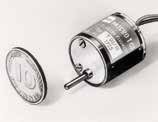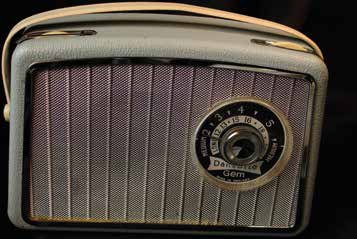articles/Review/drones-coming-page2
The Drones are Coming! - part 2 of 1 2 3 4 5 6 7
by Mike McNamee Published 01/02/2017

The Jinvik made its first flight in April 1960 and its 7,000th flight in 1999. It was controlled by a five-person ground crew.
Hawk jets were used as 'shepherds' during the flight. (http://www.airsceneuk.org.uk/hangar/1999/dera/targets.htm).
From the 60s onwards the transistor was starting to make an appearance in consumer products (having been invented in 1947). Household radios boasted that they were '3-transistor models'. Transistors also began to replace valves in radio control receivers, producing a leap forward in performance and reliability. The invention of the integrated circuit with unimaginable numbers of on-board transistors brought us to where we are today – the information age. The transistor is regarded by many as the single most important invention of the 20th century. This additional computing power was used to introduce multi-channel control so that model aircraft could have throttle control, elevators, rudders, ailerons and even retractable undercarriages. More than one model could be flown at one time; prior to that it was one of the competition safety rules that your radio transmitter had to be handed in for impounding in safe storage while other people were flying.

Other technologies had to evolve before the drones we know today could be built. Principal among these was the battery and the development of the lithium ion battery provided enough range and power to make a viable electric-powered drone. Overall drone weight was still important and today's airframes make maximum use of the carbon fibre technology developed in the 1970s but only available for domestic products in the year 2000 (tennis rackets). As well as the motor booms, drones make vital use of carbon-fibre for light, strong, low-inertia propellers (rotors), vital for the level of control that we have today. Carbon technology has developed yet further with the Nobel Prize winning invention of graphene, a material which spawned an explosion of patents in 2009 and the use in very highpower batteries in 2010.
The electric motor is also a vital element for a drone. For ease of stabilising a drone at least four rotors are needed and so light weight of each motor is vital. This is what differentiates a multi-rotor drone from a helicopter – a chopper needs to waste about 30% energy stopping itself spinning around with the rotational torque generated by the huge rotors.
Conventional single-rotor helicopters are notoriously difficult to fly and only a small number of highly skilled radio control pilots have mastered the art. The development of the so-called 'Rare Earth magnets' provided a massive boost in electric motor power-weight ratios. The initial, very costly, samarium-cobalt magnets were superseded by neodymium-ironboron magnets and costs were soon driven so low that they could be used for fridge magnets and other trinkets. The neo magnet is capable of exerting a force of 1,300 times its own weight and this translates to a very powerful electric motor for drones (and electric cars and MRI scanners along the way!). Electric motors have the peculiar characteristic of changing their torque output instantaneously with a change in the input (excitation) current. This makes them highly responsive to the control signals from a drone 'control and guidance' system which can be issuing 20 commands every second.
Please Note:
There is more than one page for this Article.
You are currently on page 2
- The Drones are Coming! page 1
- The Drones are Coming! page 2
- The Drones are Coming! page 3
- The Drones are Coming! page 4
- The Drones are Coming! page 5
- The Drones are Coming! page 6
- The Drones are Coming! page 7
1st Published 01/02/2017
last update 21/07/2022 08:46:23
More Review Articles
There are 32 days to get ready for The Society of Photographers Convention and Trade Show at The Novotel London West, Hammersmith ...
which starts on Wednesday 14th January 2026










